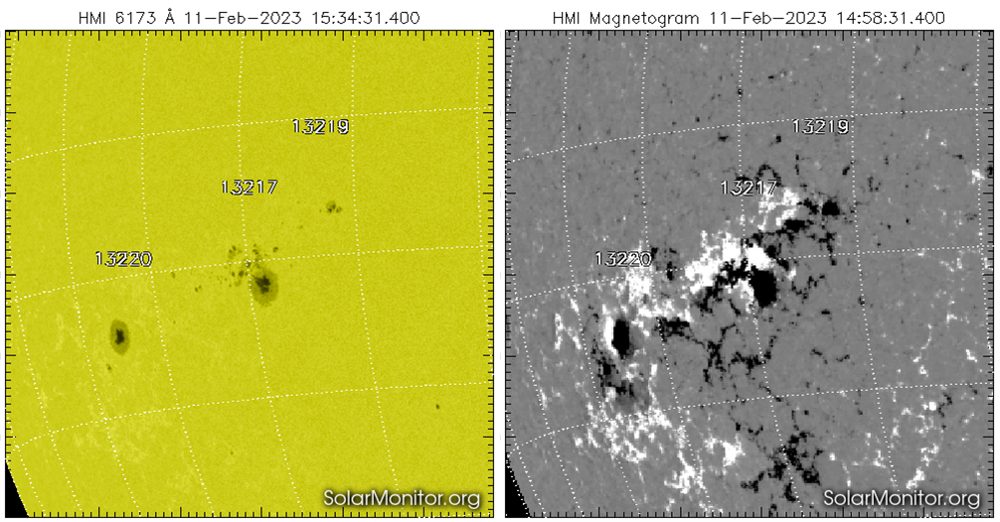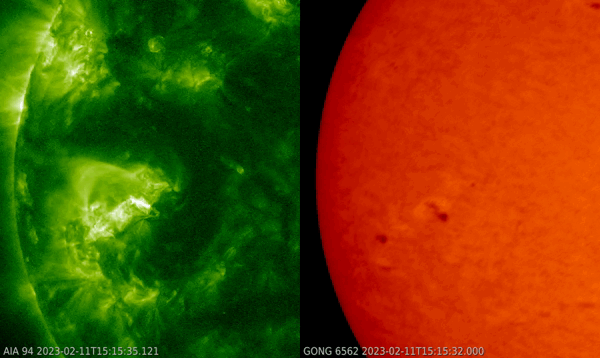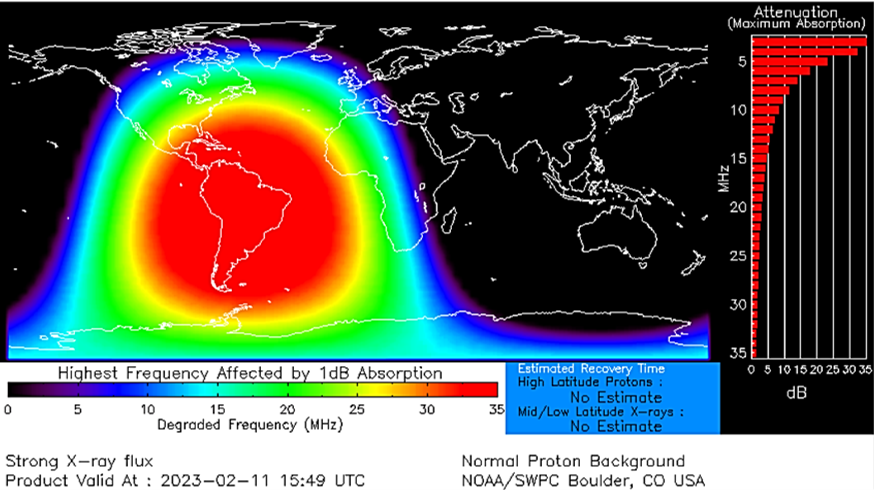NOAA 13217 is a modest but magnetically complex active region with nearby sunspot groups to its northwest and southeast. It harbors a magnetic delta structure in the northern portion of its main spot, as can be seen in the white light image (left) and magnetogram (right) underneath.

It is over this delta complex that NOAA 13217 produced an X1.1 flare peaking at 15:48 UTC today (11 February). The flare lasted only 14 minutes. The imagery underneath shows a side-by-side view of the eruption as seen in extreme ultraviolet (EUV) by SDO/AIA 094 and in H-alpha (chromosphere) by stations from the GONG network. The blooming and diffraction patterns in the EUV images are image artefacts, not related to the flare - See this STCE newsitem for more info.

EUV imagery at lower temperatures (SDO/AIA 171 (clip), GOES/SUVI 193) showed no obvious signs such as post-flare coronal loops or coronal dimming that might be indicative of a related coronal mass ejection (CME). Also, so far, no Type II radio burst has been reported by the Radio Solar Telescope Network (RSTN; NOAA/SWPC event reports). The proton flux is also still at nominal levels.

The above map (D-RAP) shows that the soft-ray and EUV emission from this flaring event may have resulted in a radio black-out mainly affecting HF radio communications over Latin America and the Caribbean. Magnetometer stations in Brazil (Intermagnet) reported a weak solar flare effect ("magnetic crochet"; more info) of only 5-10 nT (e.g. Tatuoca). Based on the currently available data, no future space weather effects are expected from this event. Further flaring from this active region remains possible over the next few days, with then an increased likelihood on more pronounced space weather effects.





